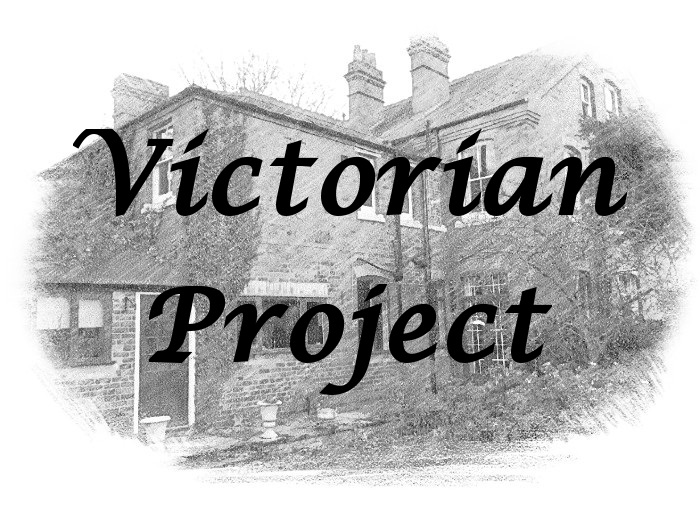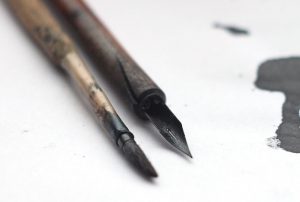So, you have just spent the last few days restoring original wooden floorboards in your home. You have put in the graft, sanding/smoothing off every board until they look like new. Before the room can be used you now need a finishing coat of something to bring it to life and to protect your efforts. There are many different wooden floor finishes you can use, each with their own set of characteristics. In this article we assess the main types of floor finishes, how they are applied and the level of protection you will get for your floor.
What is the Victorian Project all about? Find out here.
Types Of Floor Finishes
When you think of wood protection products you immediately think of varnish but this is just one of many floor finishing materials available. You need to think about the colour tone/sheen level you need to compliment your room décor and also the expected traffic on the floor. [See also: Remove Stubborn Wallpaper – Stripping Back]
Some product types are easy to apply and have many colour options but are not so hard wearing. You can get rock solid products which will last an age but they might not allow touch-ups and could be harder to put down. Each, is different and it is something of a trade-off between the benefits. If you restored the wooden floor yourself you might want to think about how good your job actually is. Some products hide imperfections better than others. There is certainly a lot to consider… [See also: Restoring Wooden Floorboards & Finishing – No Pain No Grain]
Wooden Floor Finish Options
In the next set of paragraphs we assess the main floor finish options. We start with simple paint and moving on to wood treatments. We assess the available colours, the ease of application and the durability of each product. [See also: How to Paint a Ceiling – Simple Rules & Direction]
Paint – Easy to Apply, Many Different Types & Available Everywhere
The first of the wood floor finishing materials is of course paint. Floorboards painted in white are very popular these days and it gives a kind of summer beach feel to it. Everywhere sells it and it can be a very cost effective option if you are doing multiple rooms or large areas. The application of paint could not be easier using a standard brush and generally touch-ups are possible in a few years when areas have worn away. [See also: Open Up A Fireplace & Log Burner Installation]

Just a couple of things to consider with paint. Firstly, painted wood will always require a primer first. Secondly, do your research into the different types of paint and choose something that is very hard wearing. You don’t want to take a cheaper option only for it to start to flake when the floor is used. Water based white paints yellow less but don’t tend to be as tough as oil based. [See also: Mist Coat Ratio & Painting New Plaster]
Wood Stains – Most Colour Options, Least Protection
A simple wood stain is one of the types of floor finishes with a large number of tones available. You should easily be able to find something to go with your room. This is great but the downside of a wood stain is that it offers the least protection. It merely colours the wood as opposed to coating it in a protective seal. [See also: Breathable Paint For Lime Plaster – What Are The Options?]

Application of wood stains on floors is usually done with a rag, working it into the wood and ensuring all areas are even. Be sure that no pools collect in sunken areas of the wood and be aware that stains do tend to highlight imperfections. So if your sanding job isn’t perfect then there are more forgiving choices. With many wood stains it is possible to do small touch-ups on areas that have worn. This makes them a good option if you don’t want to redo your floor every few years. [See also: Fix Damp in Victorian Houses and the Common Causes]
Waxes & Oils – The Middle Ground
In terms of floor protection waxes and oils sit in the middle between stains and varnish. You perhaps won’t get the colour choices of a stain but the products do offer a lighter barrier between people/objects and the wood.

They are a bit of an ‘all rounder’ in that you get some protection, the colour range is OK and they are easy to work with. [See also: Victorian Roof Repairs – Starting Point for any Renovation]
Most waxes & oils can be applied with a rag or large brush & as the coat is thicker than a stain they are generally good at hiding imperfections. Of all of these wood floor finishing materials these are perhaps the easiest to touch-up. The worn/scratched areas can be sanded and then a new coat of wax/oil can be built up and blended in. In smaller amounts, waxes & oils have a large number of the benefits of the other floor finish options. A bit of a ‘Jack of all trades’.[See also: What To Do With A Wallpapered Ceiling? Be Careful!]
If you are using wax/oil wooden floor finishes then multiple coats can be applied to improve the level of protection on your floor. [See also: Should Lime Be Used for Victorian Houses? Lime vs Gypsum Plaster]

Varnishes – Hard As Nails Offering Good Protection
Wood varnishes are the hardest of the wooden floor finishes and as a result offer the most protection. If your room is a high traffic area then these products will ensure that your wood is looked after. Varnishes tend to be clear but there is a limited number of colour tones available and different levels of sheen. The application of a varnish is straight forward and done using a large brush. [See also: Ivy Invasion – Removal from Bricks, Roofing & Gutters]
The main issue with a varnish is that it is very difficult to apply touch-ups. You will get a longer life out of a varnished floor, say five years when the other products are more likely two or three but you will need to sand off and redo the full floor space when the time comes. [See also: Plaster, Putty & Paint – The Living Room Walls]
Wooden Floor Finishes – Roundup
When assessing wood floor finish options it really comes down to your needs and your floor. Do you want something super hard wearing for a room with high traffic or something lighter but allows patch touch-ups? Think about how good your sanding finish is. If there are not so good places or significant imperfections then you will want a finishing product that is more forgiving. Consider the colour tone and the type of sheen and does the product range offer what you need? There are many different types of floor finishes and its about choosing the right one for both your sanding job and room décor. [See also: Repairing Lime Plaster Walls – Hiding The Cracks]


